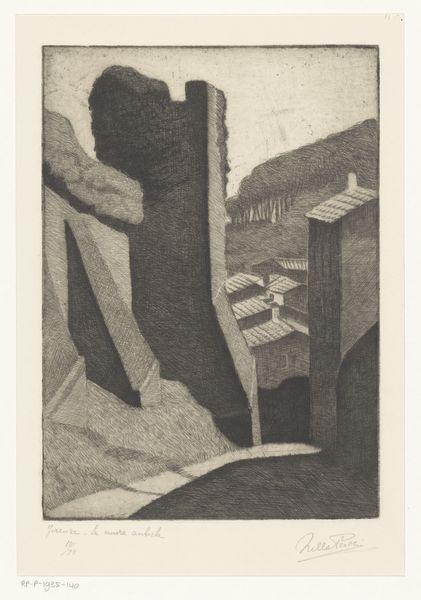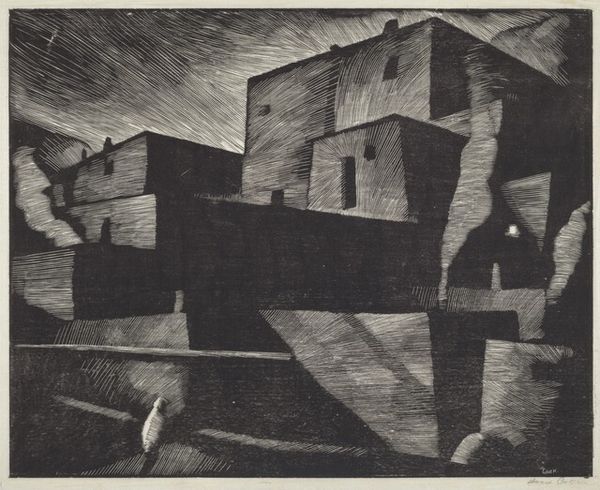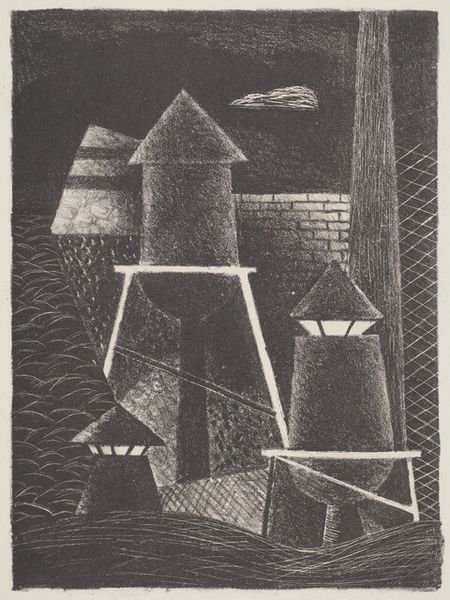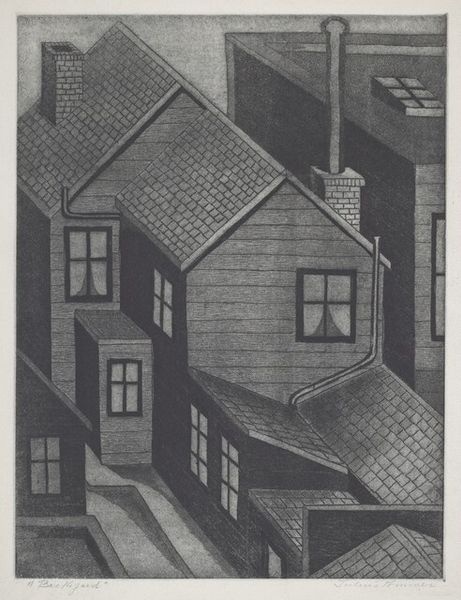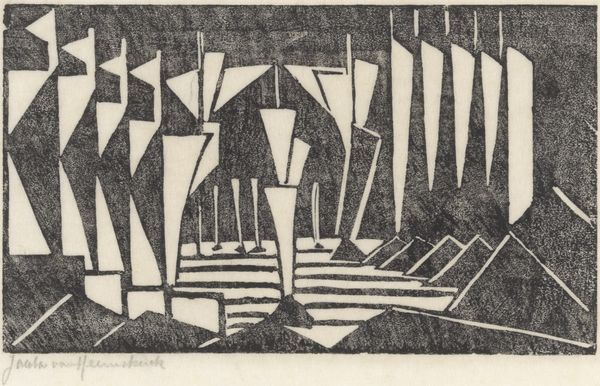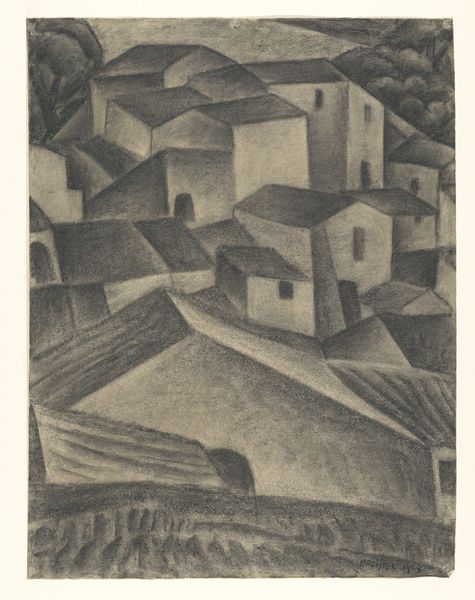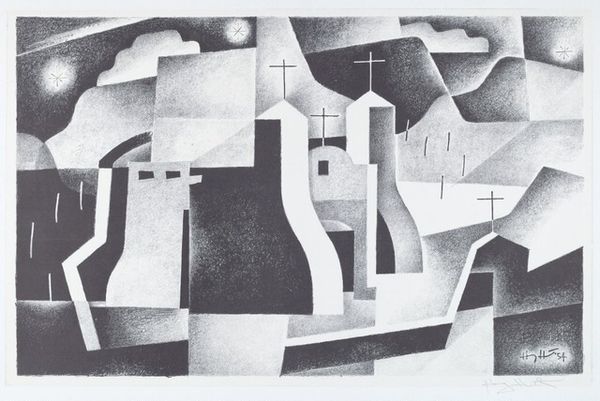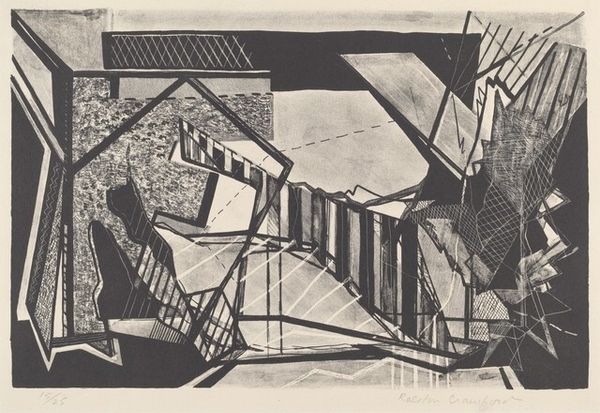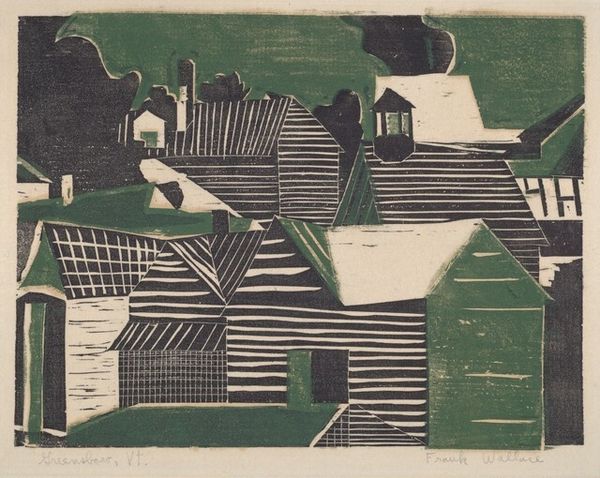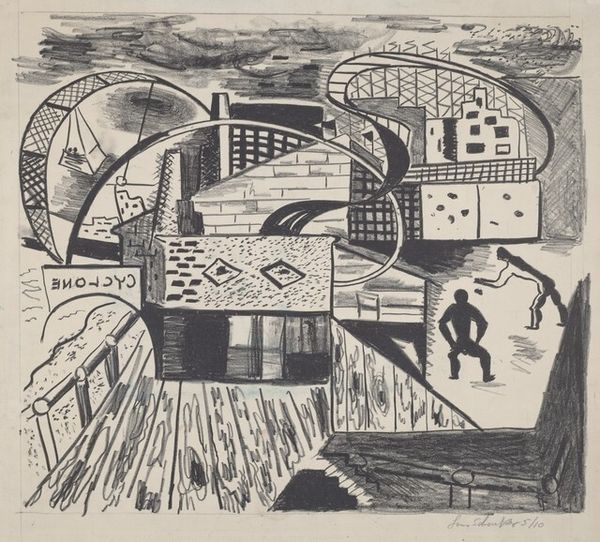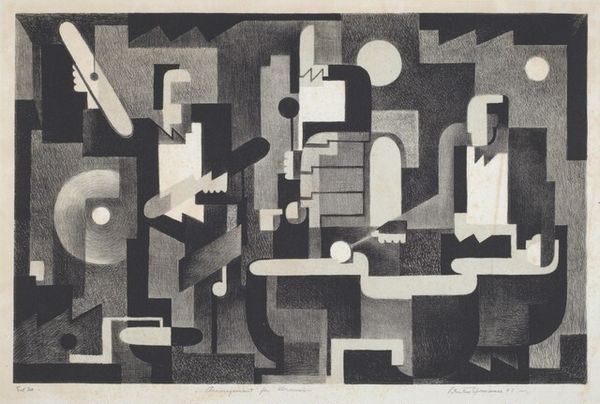
# print
#
sculpture
#
geometric
#
abstraction
#
cityscape
#
monochrome
Dimensions: stone: 298 x 403 mm image: 262 x 349 mm sheet: 330 x 505 mm
Copyright: National Gallery of Art: CC0 1.0
Curator: Looking at this print, what stands out most to you? Editor: Starkness. It's monochrome, mostly hard lines and sharp angles—a sort of bleak beauty to it, actually. A very constrained palette emotionally, would you agree? Curator: Precisely! This is Ruth Appeldoorn Mead's "Back Street Patterns," created around the 1950s. It’s a cityscape, though heavily abstracted. What emotional qualities do you feel come through its black-and-white expression? Editor: Well, knowing it was done in the '50s, I think about the social landscape—post-war anxieties, the rise of industrialism. It reads as a commentary, perhaps a critique, of urban development. There’s a definite feeling of… alienation, even, in its geometric precision. It feels cold. Curator: You know, geometry itself is powerfully symbolic. In many traditions, right angles and straight lines symbolize order, logic, even restriction. Consider the contrast here—the almost oppressive solidity of the forms versus the shimmering suggestion of water and sky in the background. Editor: I see it. It’s that tension, isn’t it? Those buildings could represent social structures, rigidly defining space, while the watery background whispers of fluidity, escape, or maybe just the vastness that makes the urban feel even more isolating. Do you think she was exploring ideas of surveillance? Curator: Absolutely! Think of those dark, looming shapes casting strong shadows, they feel omnipresent. In visual language, such dominant shadows evoke the unseen forces, the underlying currents that dictate life in urban environments. Editor: So it’s not just a cityscape, but a statement. Looking closer, those stark lines also evoke a kind of blueprint or map. We are seeing not just a space, but a structure of power and influence made visible, like X-ray vision of societal fabric. Curator: Indeed, "Back Street Patterns" is less about pictorial representation and more about distilling urban existence to its fundamental geometries, echoing deeper narratives of social organization, even human psychology! Editor: I like your interpretation. It highlights the intersection of urban space and psychological landscape. This isn't just about buildings; it’s about building pressure, too. Thanks for revealing a richer reading beyond the apparent. Curator: Thank you, understanding those angles and structures in urban scenes differently has changed how I see Ruth's piece forever!
Comments
No comments
Be the first to comment and join the conversation on the ultimate creative platform.
